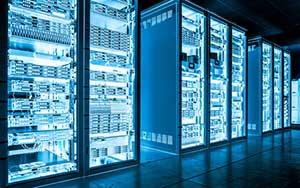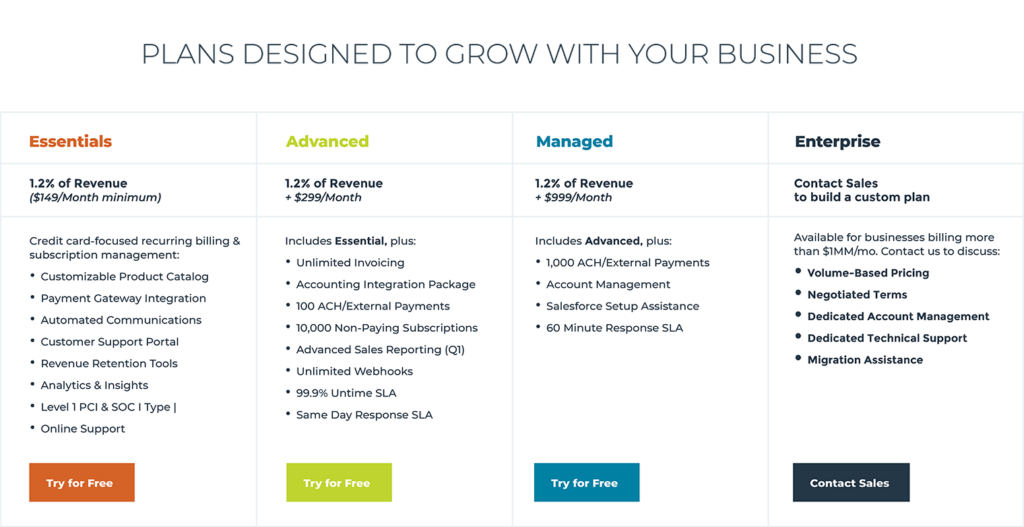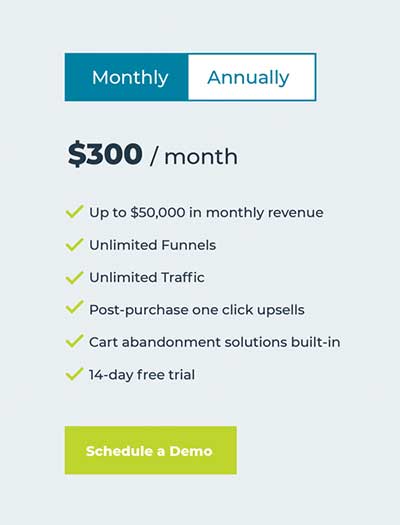SaaS applications and the SaaS business model is transforming the way that companies scale and diversify their revenue streams. Approximately 73 percent of organizations indicated that nearly all of their apps will be SaaS by 2021, according to BMC. SaaS is a popular delivery model for custom software that is cloud-based and centrally located. This concept uses a subscription model where customers are charged on a monthly, annual or per-user basis. Packages are also available that provide businesses with the most value for their money.
Customers have access to different types of subscriptions for different products and end-users. The vendor hosts and maintains the code infrastructure, servers and databases. Examples of SaaS include Dropbox, DocuSign, Slack and BigCommerce.
Why Switch To A SaaS Business Model?
Compared to traditional software options, there are countless benefits to the SaaS business model. Some of the top advantages of switching to a SaaS model include:
1. Greater Mobility
Today, businesses want the convenience of working from any location and on any device. In a post-pandemic society, the ability to work from home has become essential for many businesses. Unfortunately, some traditional software solutions force employees to stay glued to their office desktops.
With the implementation of a SaaS business model, employees can access software data and essential tools from any location, on any device with an internet connection. There is no need to install bulky software or access a virtual private network (VPN). SaaS makes it safe and easy to maintain efficiency, even during business disruptions.
2. Ongoing Savings
One of the most noticeable benefits of the SaaS business model is the ongoing savings that businesses will experience. Software as a Service eliminates the upfront cost of purchasing and installing software. It also eliminates certain ongoing software costs, such as upgrades and maintenance.
SaaS applications can be downloaded and maintained on any internet-equipped device and do not require cumbersome hardware installations. This business model is accompanied by a pay-as-you-go concept that allows businesses to pay only for the services they are using and not on unused licensing. With SaaS, companies can gain access to high-powered software that they otherwise might not be able to afford.
3. Low Maintenance

Compare this to traditional software solutions that may result in less frequent updates, greater maintenance costs and the services of an IT consultant to perform upgrades.
4. Better Collaboration
Many types of business require employees to work together to complete projects and perform operations at peak efficiency. The SaaS business model improves collaboration between employees by giving staff members the data and tools they need to be as productive as possible.
SaaS solutions can employ an architecture known as a non-relational database. This allows multiple parties to work together simultaneously from their own devices without having to be physically in the same room together. Information and documents, including CAD files, can be sent instantly and received without delay.
5. Increased Scalability
Businesses experience a high demand to provide information in real-time, requiring businesses to process large amounts of data quickly and efficiently. SaaS applications have the benefit of scalability, handling high volumes of transactions, including ongoing activities such as month-end closures and payroll processing.

Scalability also applies to other areas outside of information processing. Customers can choose from different subscription models to meet their business’s unique needs and user base and have the option of changing between different options as the need arises.
6. Seamless Innovation
The SaaS business model offers far more to businesses in terms of innovation; with Software as a Service, customers have fast, easy access to the latest technologies. All networks, hardware systems and software are ready to be utilized with a click of a button, allowing employees to remain productive and experience fewer interruptions.
With traditional software, customers are constantly addressing upgrades, updates and bug fixes wasting valuable time and money. SaaS eliminates many of these issues with improvements that are made continuously at no extra cost over the chosen subscription price. The SaaS business model ensures that customers are always working on the best and latest software version.
7. Cloud-Based Deployment

The only requirement for customers to access their data and tools is a web browser and internet connectivity. On-premise software installation and expensive infrastructure configurations are eliminated for the end-user. In addition, customers do not need to acquire a license to activate the software.
8. Ease Of Implementation
With traditional software solutions, a business may need to hire an IT professional to install and configure software onsite. This process is not only costly but can also be highly time-consuming and interfere with employee productivity.
Software as a Service differs from traditional software models as the software is already installed and configured. With SaaS, the applications become readily available in just a couple of hours, compared to traditional software which can take considerably longer.
9. Smooth Compatibility
Compatibility across business systems and software is critical to ensure that all team members remain on the same page. Software as a Service helps businesses avoid compatibility issues due to version discrepancies between employees and similar problems.
Under a SaaS business model, subscribers can easily log into an already upgraded and configured service and start working. This smooth compatibility minimizes downtime and prevents unnecessary stress among employees. SaaS also results in less confusion and fewer misunderstandings caused by software mismanagement.
10. Reliable Storage
On-premise storage solutions require businesses to invest in costly data backup methods to mitigate potentially serious hardware crashes that could lead to a significant loss of data. SaaS data is routinely saved in the cloud, making it easy for employees to switch between devices without losing their work. With Software as a Service, customers need only to log in to an online platform using their unique credentials.
The cloud offers consistent high-performance storage that is equipped to grow with the business. Customers can choose different volumes of storage to meet their business needs and modify their choice as the amount of business data they store grows larger. Sensitive business data is backed by a service-level agreement (SLA) to ensure reliable data storage.
11. User-Friendly Interface
SaaS applications are easily accessed online via a wide range of devices, such as desktops, laptops, tablets and smartphones. Along with greater convenience, customers enjoy an easy-to-use interface which means the learning curve is relatively low. End users can quickly learn how to use SaaS applications, resulting in little wasted time.
Many SaaS applications also allow for a certain degree of customization. This enables businesses to slightly modify their apps to meet the unique requirements in their specific industry, such as telecom. Tutorials are also available to customers to make it even easier to master this technology.
12. Flexible Costs
Cost is one of the biggest concerns related to business operations. Fortunately, adopting an SaaS business model can actually save money over the long term. The monthly or annual subscription fees that often accompany SaaS are often easier to incorporate into a budget compared to the unexpected costs that occasionally arise with traditional software.

With SaaS systems, businesses also have the flexibility of changing or canceling their subscription when necessary. Savings are also found in the absence of previous costs for hardware and infrastructure. Software as a Service is low maintenance and there are minimal upfront costs involved with installing and implementing a system.
13. Enhanced Security
Software as a Service is hosted on the cloud and all data is backed by the provider, making SaaS a more secure solution than traditional software systems. Even if a company experiences a security event that impacts its computer systems or servers, the business’s data remains secure on the provider’s servers and databases.
Although most businesses are concerned about cyberattacks in today’s tech-driven world, human error is also a common problem. Security issues caused by employees who work on their personal devices have increased in the last year as more staff members work from home and remote locations. Business leaders can feel confident that their data is safe on the cloud.
The Business Owner’s Handbook For SaaS Applications
SaaS applications and the SaaS business model can be incredibly lucrative, with the right type of application and proper model implementation. Our handbook is perfect for business owners interested in developing a custom SaaS application and moving towards a SaaS business model.
View SaaS Handbook
Inquire About Custom Software For Your Business
Technology is constantly evolving and when it comes to choosing the most appropriate software model for a business, there are many aspects to take into consideration. Software as a Service continues to provide modern companies with countless benefits for efficient business operations which allow them to also gain an edge over the competition.
Software as a Service empowers organizations in all industries to continue to improve. It offers advantages to both providers and customers, helping both parties to cut costs, save time and become more productive. When companies depend on providers to perform the bulk of the work, leaders can focus on more business-driven activities.
To learn more about the benefits of the SaaS business model or to speak with a custom software development company about building a custom software solution for your business, contact Orases today by calling 301.756.5527 or by requesting a consultation online today.






